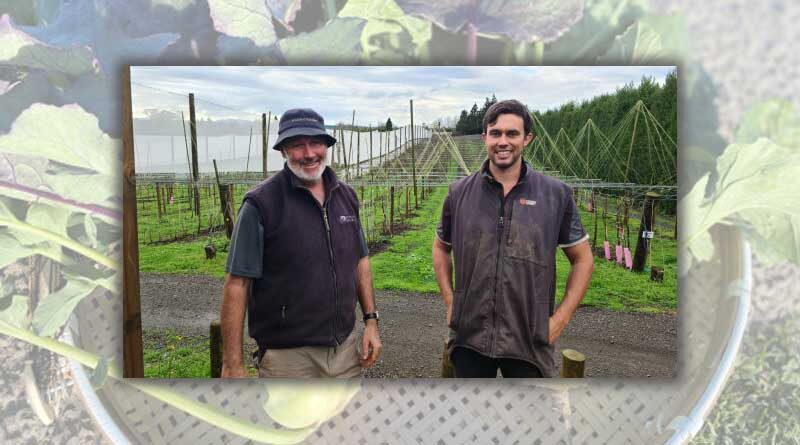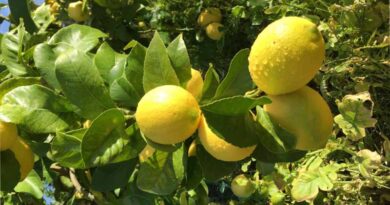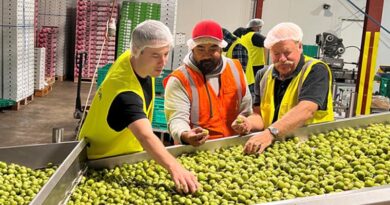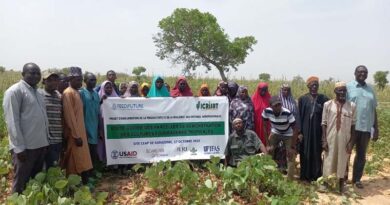Little red gem sizing up on New Zealand orchards
27 September 2022, NZ: The new Zespri RubyRed™ kiwifruit variety makes up 15 percent of the Glenview Orchard near Hamilton and not only provides high returns but a continuous workflow through much of the year too. ANNE HARDIE speaks to growers of the new variety and how it is progressing.
Richard and Robyn Glenn were some of the first growers to trial Zespri RubyRed Kiwifruit – or Zespri Red as it was known initially – having trialled the first red kiwifruit more than a decade ago. PSA wiped that first trial out so they started again from scratch.
Today, they have four hectares of greenfield Zespri RubyRed Kiwifruit under canopy that is slowly but surely maturing to full production.
Sixty percent of the orchard is made up of Zespri SunGold, with Zespri Hayward adding a further 25 percent and now Zespri RubyRed covering 15 percent. An extended kiwifruit harvest now begins in early March on the red fruit, moving on to gold and then green which together increase diversity for the business.
The Glenns began growing kiwifruit on their rolling block of land near Ohaupo 43 years ago. Richard says it was a toss-up between dairy and kiwifruit and the latter won. For years they grew apples for a time as well, but Richard says their apple crop never matched other regions such as Hawke’s Bay and Nelson, whereas they were achieving good kiwifruit results. Zespri’s Plant Variety Rights (PVRs) were also a reason to gradually quit the apples and plant more kiwifruit.
Over the years they have trialled a number of kiwifruit possibilities for Zespri, which gave the kiwifruit marketer a geographical spread in its trials and a variety of growers. It also gave the Glenns an early insight into the new red kiwifruit.
Richard describes it as an orchardist’s fruit. It takes work to grow the size of the fruit and all orchard practices have to be carried out on time. That is the job of their son, Matthew, who is in charge of the day-to-day management of the orchard.
“It’s just making sure you do jobs on time,” Richard says. “Once you have a mature canopy, you need to make sure the thinning is nailed early. This variety will also need more pruning at certain times of the year.”
Free-draining, warm sites are essential for the variety and their own orchard sits on rolling silt-loam country. Richard says shelter is vital as well and he thinks the greenfield route with canopy is probably the best way to go to achieve warmth for the crop.
The original plantings of Zespri RubyRed Kiwifruit were spaced at 5 metres by 3.5m wide, but the Glenns then double planted them and they are now spaced at 2.5m and 3m wide.
“The reason for that is when we double planted them, it had bigger fruit which you can see with your eye.”
The variety is a smaller fruit than its gold and green counterparts, though Richard expects size to increase as the crop matures and as the variety is improved over the years. It takes hard work with a range of tactics to get the fruit size up. Most of it is simply good orchard management, but he says growers have to be proactive and get jobs done on time. They are targeting a 34 to 35 count for Zespri RubyRed Kiwifruit this year and he knows another orchard has achieved a larger size fruit of 32 to 33.
“In the next ten to 15 years they will produce better versions and we’ll get the fruit size right and crop size right,” Richard says.
The fruit may be smaller, but returns are high. Richard says the three varieties now provide ten months of work for their contractor’s staff.
Zespri RubyRed Kiwifruit starts the season with bud burst between 20 and 25 August. By the time they begin flower thinning on the variety, around 20 September, the pruning team is still working in the Hayward blocks. Just like harvest, flower thinning flows from red to gold and then green. Once completed, it is time to begin summer work on the reds. Come early March, Zespri RubyRed Kiwifruit is the first off the blocks to harvest.
At harvest, Zespri RubyRed Kiwifruit is a little stiffer to pick from the vines and Richard says is even more important than the other two varieties to get it to the coolstore on the day it is picked. Glenview Orchard packs all of its fruit through EastPack in Te Puke and he says they work on getting the smaller kiwifruit cooling as soon as possible.
“The day you pick it you want it in a coolstore to reduce field heat,” Richard says.
The fruit itself has a vibrant red flesh which prompted its name and Richard says its taste is as different to other kiwifruit varieties as its looks.
“It has a berry taste which you can smell and taste,” he says. “I give it to people and they go ‘wow!’”
This year was the fourth crop of Zespri RubyRed Kiwifruit out of the orchard.
Richard says growers can expect full production from a greenfield orchard in four to five years, whereas grafted Zespri RubyRed Kiwifruit will get there in three to four years. Their own crop is still coming onstream and he expects to produce up to 11,000 trays. It will not match Zespri SunGold Kiwifruit for returns, but he says it will far exceed Hayward.
Zespri had about 105,000 trays of Zespri RubyRed Kiwifruit for its first commercial volumes this year, up from the 70,000 trays produced last year.
The variety has a shorter shelf life compared with Zespri SunGold Kiwifruit and Zespri Green which has prompted Zespri to concentrate on Asian markets because of the shorter shipping times.
This year’s crop was distributed to New Zealand, Japan, China, Singapore, and Taiwan while Zespri continues to explore growing trials in the Northern Hemisphere.
Also Read: Wholesale price of garlic in Madhya Pradesh lowest in last three weeks
(For Latest Agriculture News & Updates, follow Krishak Jagat on Google News)















